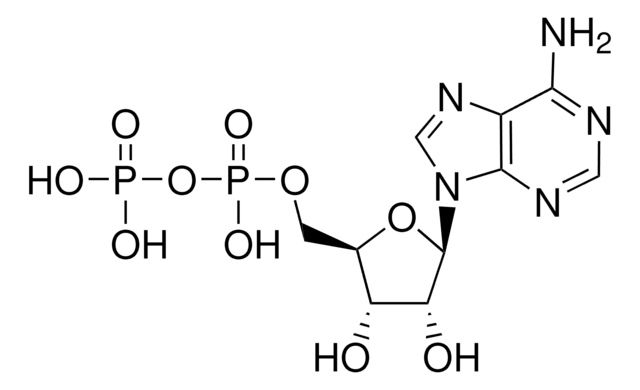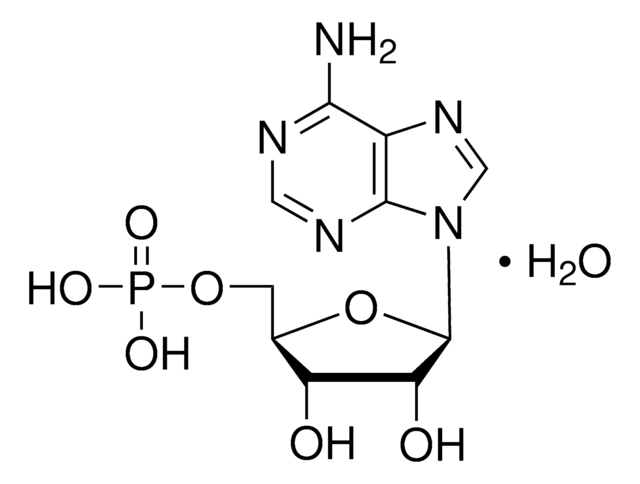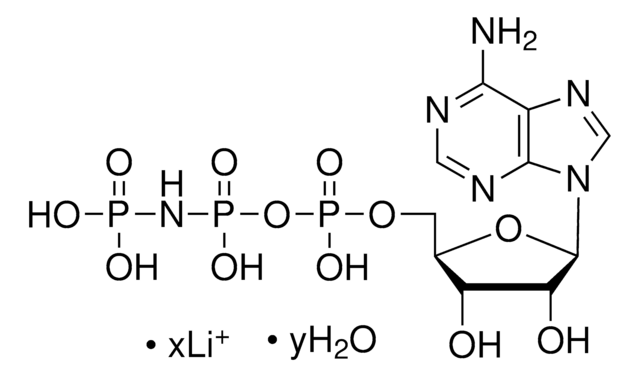A4386
Adenosine 5′-diphosphate bis(cyclohexylammonium) salt
≥95% (HPLC), crystalline, bacterial
Sinónimos:
A2P5P, ADP
About This Item
Productos recomendados
biological source
bacterial
Quality Level
assay
≥95% (HPLC)
form
crystalline
solubility
H2O: soluble, clear to slightly hazy, colorless to faintly yellow
storage temp.
−20°C
SMILES string
NC1CCCCC1.NC2CCCCC2.Nc3ncnc4n(cnc34)[C@@H]5O[C@H](COP(O)(=O)OP(O)(O)=O)[C@@H](O)[C@H]5O
InChI
1S/C10H15N5O10P2.2C6H13N/c11-8-5-9(13-2-12-8)15(3-14-5)10-7(17)6(16)4(24-10)1-23-27(21,22)25-26(18,19)20;2*7-6-4-2-1-3-5-6/h2-4,6-7,10,16-17H,1H2,(H,21,22)(H2,11,12,13)(H2,18,19,20);2*6H,1-5,7H2/t4-,6-,7-,10-;;/m1../s1
InChI key
SCOUEIPNDLFPCX-IDIVVRGQSA-N
¿Está buscando productos similares? Visita Guía de comparación de productos
Application
Caution
Storage Class
11 - Combustible Solids
wgk_germany
WGK 3
flash_point_f
Not applicable
flash_point_c
Not applicable
ppe
Eyeshields, Gloves, type N95 (US)
Certificados de análisis (COA)
Busque Certificados de análisis (COA) introduciendo el número de lote del producto. Los números de lote se encuentran en la etiqueta del producto después de las palabras «Lot» o «Batch»
¿Ya tiene este producto?
Encuentre la documentación para los productos que ha comprado recientemente en la Biblioteca de documentos.
Los clientes también vieron
Nuestro equipo de científicos tiene experiencia en todas las áreas de investigación: Ciencias de la vida, Ciencia de los materiales, Síntesis química, Cromatografía, Analítica y muchas otras.
Póngase en contacto con el Servicio técnico







![Adenosine 5′-[γ-thio]triphosphate tetralithium salt ≥75% (HPLC), powder](/deepweb/assets/sigmaaldrich/product/structures/319/398/e29221c2-3649-455b-bd33-583bb017ec7d/640/e29221c2-3649-455b-bd33-583bb017ec7d.png)